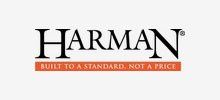Pellet Stoves
Full Showroom | Free Estimates | Certified Installers
Full ShowroomFree EstimatesCertified Installers
(860) 693-3404
Better Alternative to Burning Wood
You can save money with a pellet stove that can actually heat your home for less than $100 per month! Valley Fireplace & Stove, LLC has a large selection of quality pellet stoves to choose from for your home.
Pellet stoves are not only affordable, but they're also easy to operate, smoke-free and heat safe! You'll only need to fill your pellet stove a couple of times a week while enjoying a clean, warm and safe heating source. Stop by our showroom
today to get a FREE estimate and view our products.
Choose the Brand That Fits Your Style and Space
- Harman
- Regency
Benefits of a Pellet Stove
While most pellet stoves are self-igniting and cycle themselves on and off under thermostatic control, pellet stoves with automatic ignition can be equipped with remote controls.
New innovations include integrated microcontroller monitoring of various safety conditions that run diagnostic tests if an imminent problem arises.
If you clean and maintain your pellet stove, it should not create creosote, which is the sticky, flammable substance that causes chimney fires. Pellets burn very cleanly and create only a layer of fine fly ash as a byproduct of combustion.
The grade of pellet fuel affects the performance and ash output of your pellet stove. Premium-grade pellets produce less than one percent ash content, while standard or low-grade pellets produce up to six percent ash.
You should be aware of the extra maintenance required with lower grade pellets, and if you use inconsistent wood quality, it can cause serious effects to the electronic machinery over a short period of time.
A pellet stove normally uses pelletized wood. Many pellet stoves will also burn fuels such as grain, corn, seeds or wood chips. In some pellet stoves, these fuels may need to be mixed with wood pellets. Pelletized trash (mostly waste paper) is also a fuel for pellet stoves.
Free Estimates and Consultations
(860) 693-3404
"Purchased a Harman pellet stove insert about five years ago. Their pricing was great and service outstanding. Recently had an issue and I talked to Jay over the phone who walked me through some troubleshooting. His suggestions did the trick. Thank you! Highly recommend Valley Fireplace and Stove."
Jim Bellemare, Google Review



Share On: